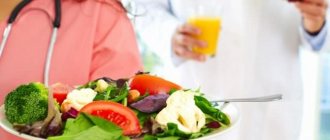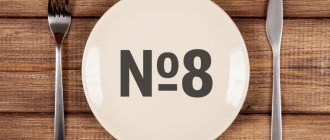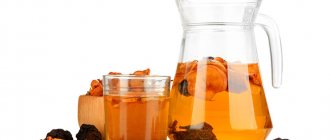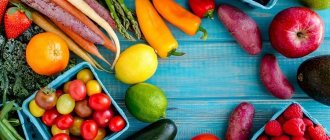Typically, dietary meals for children are understood very differently. In a utilitarian medical sense, this is food for little allergy sufferers who suffer from chronic diseases of the kidneys, liver, heart, or other abnormalities that do not allow them to eat with everyone else. Diet in case of illness is a necessary condition for correcting well-being, and it is prescribed by a specialist. Typically, such dishes are prepared as part of dietary tables, and their recipes must be approved by the child's doctor. But in practice, this category of recipes often includes everything that we would simply call “healthy” and “not leading to excess weight gain.” In addition, this also includes low-calorie dishes adapted for overweight children.
Features of a children's healthy diet
Designed by Freepik
Children's menu should be balanced and varied so that their body is saturated with proteins, fats, carbohydrates and other beneficial substances.
In order for food to bring only benefits to the child, the following rules must be followed:
- The daily menu should contain the required amount of proteins, fats, carbohydrates (BJU), as well as vitamins and minerals.
- Parents should monitor the calorie intake so that the baby consumes as much energy from food as he expends.
- Include new recipes on the menu periodically.
- Correctly distribute the number of calories for each meal: breakfast - 25%, lunch - 40%, dinner - 25%, and the rest for an afternoon snack.
- The child should eat 4 times a day with a break of 4-6 hours.
- Proteins are necessary for children; they can be found in cottage cheese, dietary meat, fish, milk, and eggs.
- Complex carbohydrates provide energy (porridge, fruits, bran bread, vegetables, some sweets).
- The amount of simple carbohydrates (confectionery, sugar) should not exceed 20% of the total amount of carbohydrates.
- Meat, vegetables, fruits, milk, butter, sugar (small amounts) can be consumed every day.
- The child should eat eggs, cheese, fish, cottage cheese 1-3 times a week.
- Boil, steam, stew, bake foods.
- It is better to avoid mustard, pepper, horseradish, and vinegar. This applies to spicy, fried foods, coffee, fast food, semi-finished products, mushrooms, perishable confectionery, and smoked meats.
- You need to drink at least 1.5 liters of clean water per day, and in the hot season - from 2 liters.
Water should be drunk 30 minutes before meals or 1.5 hours after it. You can also drink fresh juices, fruit drinks, and green tea. You should avoid store-bought juices and sodas.
Attention! Fruits can be eaten between meals, not during. Otherwise, the likelihood of digestive disorders increases.
Be sure to look: Options for a healthy dinner What is a healthy breakfast Is it worth eating lunch with proper nutrition Rules and recipes for the menu with proper nutrition
Diet for children
Hypoallergenic diet for children
Nowadays, many children are prone to allergies. And since doctors say that this is a genetic disease, this means that if you have allergies in your family, many foods must be introduced into the child’s diet very carefully. In addition, such children need to follow a strict diet.
It is very important for parents to learn how to combine foods, and also to convince the child that some foods are contraindicated for him during an exacerbation of allergies.

The list of taboo products is quite impressive:
- Bright red and orange fruits and vegetables. This includes apples (only green ones are allowed!), carrots, tomatoes, strawberries, pumpkins, persimmons, raspberries, melons, etc.
- Citrus.
- Fish. Sea fish is especially contraindicated.
- Bird. Waterfowl - ducks and goose - are strictly prohibited.
- Chocolate. Any chocolate products and even just sweets.
- Nuts. Especially walnuts, peanuts, almonds and hazelnuts.
- Smoked meats.
- Mayonnaise.
- Mustard.
- Vinegar.
- Sauce.
- Mushrooms.
- Eggs (especially chicken).
- Milk (cow's).
- Honey (any bee products).
- Baking.
- All products with dyes, food additives and, especially, preservatives.
Gluten-free diet for children
If a child has gluten intolerance—his body is unable to absorb plant protein from cereals—he needs to follow a gluten-free diet. Otherwise, if the diet is not followed, the child may develop a number of complex disorders in the body.
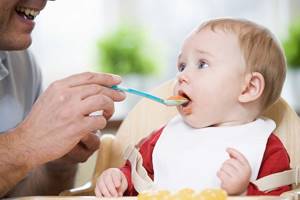
Strictly contraindicated for children with gluten intolerance:
- rye;
- oats;
- wheat;
- barley;
- barley;
- couscous;
- semolina;
- bread;
- crackers;
- pasta;
- canned food (industrial);
- sauces;
- mayonnaise;
- confectionery;
- candies;
- sausages;
- crab sticks;
- sausages;
- semi-finished meat products;
- any products that contain starch;
- any foods that contain fiber.
What can a child eat: meat, fish and seafood, eggs, buckwheat, rice, millet, corn, potatoes, all products made from gluten-free flour, any vegetables and fruits, nuts, any butter, any dairy products.
Dairy-free diet for a child
Sometimes a child has lactose intolerance or casein intolerance from birth. That is, if you eat any dairy products, it can cause a severe allergic reaction, after which serious problems with the intestines can occur. There is only one way out - to exclude from the diet absolutely all foods that contain milk and dairy products.
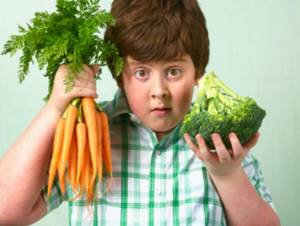
Delicious recipes for different age categories

When creating a diet for a child, the peculiarities of its development should be taken into account.
All children are very energetic, so they need to make up for the lack of calories through food. But in order for a child to eat with pleasure, you need to constantly look for new recipes and decorate them beautifully.
From permitted products you can prepare interesting, tasty and healthy dishes for children of any age.
From birth to 1.5 years
Starting from 6 months, babies can consume vegetable and meat purees. Pediatricians recommend starting with single-ingredient meals, gradually increasing their quantity.
Important! Taste a new dish in a small portion, and then watch your baby’s reaction. If there is no allergy, then the portion can be gradually increased. To avoid trouble, do not give your child 2 different foods on the same day.
Prepare a new portion of food for your newborn every time, as pathogenic bacteria can develop in it.
Cream soup
This dish is suitable for babies who cannot yet chew solid food. It does not irritate the mucous membrane of the digestive organs and is suitable for dietary nutrition.
Recipe:
- Peel, chop and boil 100 g of vegetables (potatoes, cauliflower, zucchini).
- Drain the finished broth and chop the vegetables in a blender.
- Dilute the puree with broth to the desired consistency.
- Add 3 g butter, ¼ yolk and some herbs.
Pediatricians advise cooking for infants without salt so that the baby gets used to the natural taste of the products.
Pumpkin-Apple Casserole
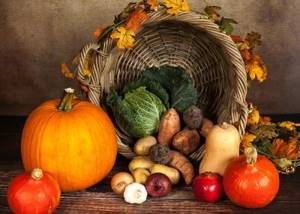
When your baby reaches 1.5 years old, pamper him with delicious and healthy pastries.
Casserole recipe:
- Peel and grate 2 apples, 300 g pumpkin.
- Add 3 tbsp to the mixture. tablespoons flour, egg, 25 ml olive oil.
- Pour the dough into a greased pan.
- Bake for 40 minutes at 180°.
The dish can be supplemented with low fat sour cream.
Diet meatballs with sauce
Meat can be introduced into a child’s menu from 7-8 months. In this case, preference should be given to dietary varieties, for example, turkey.
Cooking steps:
- Pass the meat through a meat grinder.
- Add some onions, carrots, a quail egg, herbs, and a little salt.
- Make cutlets.
- Cook them in a slow cooker.
You can complement them with broccoli and cream sauce. To prepare it, cook 200 g of broccoli for 5-7 minutes, then drain a little water and chop with a blender. Place the puree on the stove, pour in 150 ml of cream (20%), cook for several minutes, stirring. Then add a little salt, 5 g of olive oil. Ready!
From 2 to 3 years

Potato and fish pancakes
This dish is quite simple to prepare, but it is healthy and many kids like it.
Cooking method:
- Prepare regular mashed potatoes.
- Boil, remove bones, chop fish (preferably with white meat).
- Mix both masses.
- Add some finely chopped onion and parsley.
- Beat the egg separately and mix with the future dough.
- Sift 200 g of flour.
- Fry the pancakes in a hot frying pan greased with oil.
Cooled pancakes can be topped with sour cream or homemade sauce.
Lazy dumplings
This dessert will be appreciated by many kids, and it is very easy to prepare.
Cooking instructions:
- Mix 200 g of cottage cheese with 25 g of cane sugar.
- Add the egg, beat with a blender so that the protein from the cottage cheese is better absorbed and the consistency of the dumplings is airy.
- Sift 100 g of flour, mix.
- Knead the dough, form a sausage and cut it into pieces. It is recommended to press the middle of each dumpling with your fingers (this is the easiest option). If desired, you can roll out the dough and cut out interesting shapes from it.
- Salt the boiling water and carefully place the dumplings in it.
- Stir to prevent the dumplings from sticking to the bottom.
- When they float to the surface, boil them for 3-5 minutes, and then take them out and season with butter.
Warm dumplings can be complemented with sour cream and raspberry sauce. To do this, mix a little low-fat sour cream and raspberry jam. Your baby will appreciate this delicious dessert.
You may also be interested in: Cottage cheese casserole with proper nutrition
Healthy sweets: recipes
Cod with vegetables and fish sauce
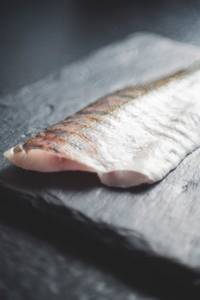
This dish is tasty, satisfying and healthy. Fish contains protein, valuable fats, and vegetables contain many complex carbohydrates.
Recipe:
- Cut the green paprika, some onion and zucchini into strips.
- Place the vegetables on a greased baking dish and add a little salt.
- Place fish fillets, previously pitted, on top of the vegetables.
- Place in the oven at 150° until done.
- Meanwhile, start preparing the sauce.
- Grease a frying pan with cow's butter, pour in some milk, flour, and some grated cheese.
- Pour the sauce over the finished fish and vegetables.
If desired, the dish can be supplemented with herbs.
From 4 to 6 years
Preschoolers are very active, they develop quickly and spend a lot of energy. You can compensate for its deficiency with the help of tasty and varied foods that contain all the necessary nutrients, vitamins, minerals and fiber.
Banana cheesecake

This dessert has a delicate taste and unique aroma. It will successfully replace store-bought sweets that contain flavors, dyes, preservatives and other harmful additives.
Banana Cheesecake Recipe:
- Mix 450 g of cottage cheese, 2 eggs, 100 g of sugar.
- Add banana and puree using a blender.
- Add 150 g of flour, 1 pack of baking powder, mix thoroughly. If desired, you can add raisins, chopped dates or other dried fruits.
- Pour the dough onto a baking sheet and bake until done at 180°.
Cooled cheesecake can be served with jam.
Bruschettas with chicken pate
It is difficult for preschoolers to force themselves to sit down and eat normally. They prefer to snack on the go.
Therefore, mothers of fidgets think about what to whip up so that the child does not eat sandwiches and does not feel hungry.
Cooking method:
- Prepare whole grain bread.
- Separately, boil the chicken fillet until cooked.
- Grind it with butter in a blender, add a little salt and spices.
- Spread the prepared pate onto the bread, add the tomato and lettuce.
The child will be happy with such an unusual and tasty snack.
Meat and vegetable mousse
This dish consists of dietary products, it relieves the digestive organs and relieves the child of hunger.
Cooking instructions:
- Take a piece of boneless rabbit meat, boil until tender, add a little salt.
- Grind the cooled meat using a blender or meat grinder.
- Boil potatoes and carrots separately.
- Add boiled vegetables to the puree, pour in low-fat cream, and beat with a blender.
If desired, the dish can be supplemented with herbs.
From 7 to 16 years old

Broccoli cutlets
Cabbage is rich in protein, fiber and other beneficial substances, so it should be included in a schoolchild’s diet. By the way, broccoli in this recipe can be replaced with any other type of vegetable.
Recipe:
- Chop 1 onion, fry for 5 minutes.
- Wash 500 g of cabbage, add to the onion and simmer for 10 minutes under the lid.
- Grind the onion and cabbage in a blender, add an egg, a little salt, pepper, 100 g of grated cheese.
- Add flour so that the mixture is not too thick.
- Form cutlets, roll them in breading and fry.
These cutlets can be served with homemade sauce.
Risotto with cabbage and nuts
This Italian dish is usually made with rice, meat and vegetable broth. To make the recipe unusual, replace the standard ingredients with cabbage and almonds.
Cooking method:
- Grind 1/3 cup almonds and fry in a dry frying pan.
- Cut 150 g of cheese, wash the cauliflower and separate into inflorescences.
- Fry the cabbage in olive oil and salt until golden brown.
- Bring 400ml chicken stock to the boil with 3 sprigs of thyme.
- Fry 1.5 cups of rice in olive oil (1 minute). Then add 1 ladle of broth there. Cook until the cereal absorbs the liquid, and then add more broth and cook for 20 minutes, remembering to stir.
- Add nuts, cabbage and cheese to the rice and stir.
Such a lunch will not only fill you up and give you pleasure, but will also improve the functionality of your gastrointestinal tract and brain.
Fish soup with celery
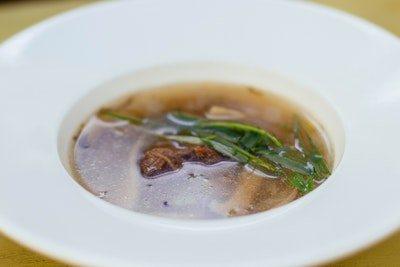
First courses must be present on the student’s menu. And from white sea fish you will get a fragrant and rich broth.
Recipe:
- Wash, cut 400 g of fish into pieces, place in a pan, skim off the foam. Then cook for another 7 minutes over low heat. Then remove the fillet and filter the liquid.
- Cut 4 celery stalks into thin slices, chop carrots, onions, and herbs.
- Fry the chopped vegetables for 5 minutes. Then add them to the pan along with salt and pepper and cook for 7 minutes.
- Then return the fillet and cook for 3 minutes.
- Remove the soup from the stove, add the herbs, leave for 10 minutes.
Serve the dish with croutons.
You may also be interested in: Proper nutrition for a student: how to create a healthy menu
Diagnosis of excess weight pathology by BMI
BMI is another indicator that is used to diagnose obesity. It also shows whether it is time to “put” the child on a diet.
The BMI indicator is calculated using the formula:
BMI = body weight\(height x height)
The obtained result is compared with the table data.
Table - BMI and amount of body fat
Be sure to read: Effective and quick weight loss with a raw food diet
| Up to 16 | Weight deficiency or dystrophy |
| 16-19 | underweight |
| 19-25 | norm |
| 25-30 | excess body weight |
| 30-35 | obesity 1st degree |
| 35-40 | obesity 2 degrees |
| More than 45 | obesity 3rd degree |
The need for a diet arises not only with severe degrees of obesity - 1, 2 or 3. It is time to put a child on a diet if the BMI is above 27-28 units.
Main conclusions
Thus, in order for your child to grow healthy and fully develop, you need to correctly formulate his menu. It should be remembered that the dietary requirements for children of different ages differ:
- From birth to 1.5 years, a child can consume vegetable, fruit or meat purees. Start with single-ingredient meals, observe your baby’s reaction to new foods, and gradually expand the diet.
- From 2 to 3 years, the child’s diet expands. It is worth adding interesting and healthy main courses to its menu, as well as homemade desserts.
- Tasty and varied food, rich in nutrients, will make up for the lack of calories in energetic preschoolers.
- Schoolchildren's menus should include proteins, fiber, and healthy fats, since they spend a lot of energy on mental activity.
The main thing is to exclude harmful foods from the child’s life and cook only from natural and beneficial ones. Moreover, there are so many recipes for delicious and healthy dishes!
Diagnosis of obesity: when excess weight becomes a pathology
Excess weight is a subjective assessment. We can say that a person is dense, or we can evaluate his physique as “strong.” But obesity is already a diagnosis. And there are certain criteria for setting it up.
The diagnosis of childhood obesity is made by a pediatrician or endocrinologist. We must understand that making a diagnosis is already a disease. Even with the first degree of obesity, the child’s metabolism is impaired, immunity is reduced, there are allergies and frequent constipation.

Obesity develops over time, over 2-3 years. During this time, the child gradually increases fat reserves. You can suspect something is wrong and try to prevent the disease earlier. When should you sound the alarm and put your child on a weight loss diet?
The diagnosis of obesity is made when a child’s body weight exceeds the norm by more than 15%. There is no obesity level yet, there is excess weight. From the 15% line, the child is registered with an endocrinologist and is subject to treatment.
There are several degrees of childhood obesity:
- Excess body weight by 15-25% – 1 degree;
- Excess weight by 25-50% – 2nd degree;
- Excess weight by 50 – 100% – 3rd degree;
- Excess weight by more than 100% – 4th degree.
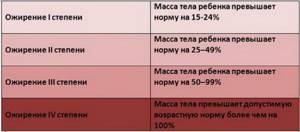
Note: in adults, obesity is diagnosed using different numbers. So, for women, the diagnosis is made if body weight exceeds the norm by more than 20%. And for men – more than 10%.
In most children with this diagnosis, the degree of the disease is initial, first or second. This allows you to cure the child and get rid of obesity.
Why should obesity be treated?
Excess fat reserves in children are deposited mainly under the skin. In childhood, they form touching folds. In preschool - they cause constipation and allergies. In school - cause shortness of breath and digestive diseases (cholecystitis, pancreatitis, fatty liver hepatosis).
In girls, fat reserves increase in the mammary glands. But in general, they delay sexual development.
In adolescence, high blood pressure and insulin resistance are added to existing problems. In boys with obesity, the penis is underdeveloped; in girls, menstruation is absent for a long time.
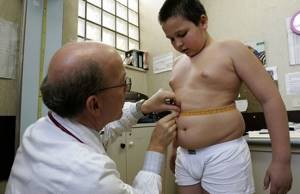
Epilepsy
The ketogenic diet for epilepsy in children has been used relatively recently as a separate treatment method, and leads to good results. The diet should be carried out under the strict supervision of a specialist. When compiling it, preference is given to foods high in fat and at the same time with a minimum amount of carbohydrates. This type of nutrition helps control epileptic seizures.
To treat children, a specialist prepares a special milk-based fatty cocktail. The doctor also selects the dishes needed to be included in the menu. Creating a diet on your own can lead to an exacerbation of the disease.

Rabbit soufflé
Rabbit meat is tender, tasty and dietary. It is recommended as the first meat supplement. And for older children, any rabbit dishes are good. Including soufflé - it’s easy to prepare and easy to digest.
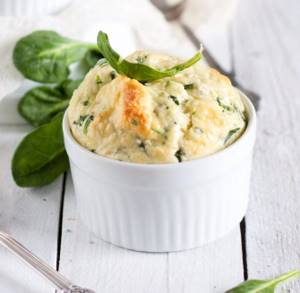
Dietary dishes for children: rabbit soufflé recipe
- Boil 200 grams of rabbit meat in steam or water.
- Soak 80 grams of white bread crumb in milk. The milk should lightly cover the pieces of bread.
- The finished meat should be cut into small pieces and blended in a blender along with the soaked bread until smooth.
- Add 4 quail eggs, salt to taste and beat well again. If the minced meat is not fluffy enough, you can add a little milk.
- Grease muffin tins with vegetable oil. Fill them with minced meat and place them in a baking tray filled with water.
- Cook in the oven for 15 minutes at 180 degrees.
- Soufflé is delicious both hot and cold.

School snacks
During the school year, the child should have a second breakfast. The school buffet as an alternative to homemade products is excluded. For snacking, select foods that retain their shape and attractive appearance when stored in a food container or film. A sandwich and a healthy drink will restore strength during the big break, which usually happens after the second lesson.
The best option for a light snack in class is a sandwich with a piece of hard cheese, boiled or baked meat. Vegetables should be dense and not lose juice: pieces of bell pepper, carrot or cucumber.
Sugar-free drinks: still table mineral water or chilled boiled water.
Apple, pear, banana - an assortment of healthy fruits that quickly restore a student’s performance.
Menu
A dietary menu for a child in the form of a table will help you create an individual diet.
| Day of the week | Eating | Recommended menu |
| Monday | Breakfast | Oatmeal with milk and honey |
| Snack #1 | Apple, peach | |
| Dinner | Stewed vegetables, steamed meat cutlets | |
| Snack #2 | 2 tomatoes | |
| Dinner | Stewed potatoes with mushrooms | |
| Tuesday | Breakfast | Cottage cheese casserole with raisins |
| Snack #1 | Pear, handful of cherries | |
| Dinner | Baked fish with vegetables | |
| Snack #2 | 3 cucumbers | |
| Dinner | Cabbage, peas, beets and carrots salad | |
| Wednesday | Breakfast | Omelet with milk from 3 eggs, a piece of rye bread |
| Snack #1 | 50 g walnuts | |
| Dinner | Meatball soup, a slice of grain bread | |
| Snack #2 | Cottage cheese with celery | |
| Dinner | Baked zucchini stuffed with carrots, onions and cheese | |
| Thursday | Breakfast | Rice with milk and water (halved) |
| Snack #1 | Orange, 10 large grapes | |
| Dinner | Steamed chicken breast and broccoli | |
| Snack #2 | Puree of grated carrots and apples | |
| Dinner | Stewed eggplant | |
| Friday | Breakfast | Cheese sandwich, egg, tea |
| Snack #1 | Cottage cheese with sour cream and honey | |
| Dinner | Rabbit meat stewed with Chinese cabbage | |
| Snack #2 | Zucchini fritters | |
| Dinner | Mushroom soup with vegetables without meat | |
| Saturday | Breakfast | Cottage cheese with berries |
| Snack #1 | Half a grapefruit, an apple | |
| Dinner | Fish cutlet, cauliflower puree | |
| Snack #2 | Natural low-fat yogurt | |
| Dinner | Borscht with vegetable broth | |
| Sunday | Breakfast | Millet porridge with milk |
| Snack #1 | Nectarine, 20 g hazelnuts | |
| Dinner | Vinaigrette without potatoes, steamed beef | |
| Snack #2 | Tomato and cucumber salad | |
| Dinner | Vegetable cabbage soup |
What products need to be eliminated or replaced?

Any diet involves limiting or removing a number of foods from the diet. A weight loss menu compiled for a child will be no exception.
The following foods are prohibited:
- cereals - wheat, oats, barley, rye and any products prepared on their basis;
- smoked meats, pickles, marinades, canned food;
- vegetables fried in flour or breaded in breadcrumbs;
- any sauces made with mayonnaise and butter;
- products made from white flour, rich and sweet pastries;
- fast food, nuts, crackers, chips;
- chocolate, sweets, cakes, pastries;
- sausages, lard, semi-finished products.
Contraindications
Not everyone can use diet food to lose weight:
- diseases of the digestive system require a certain medical table;
- If you have diseases of the internal organs, you should not go on a diet;
- with endocrine system problems or metabolic disorders;
- if you are allergic to any foods in your diet;
- for colds, inflammatory processes;
- after operations;
- children under 5 years old;
- for diabetes;
- if there are malignant or benign neoplasms.
Many girls and boys have an allergy to milk protein or lactose intolerance, in which case dairy products are completely excluded from the diet, replacing them with others.
The pleasure of diet food and more
In order for a son or daughter to want to stick to a diet for weight loss, it is necessary to diversify it... with positive emotions. Offer a diet in the form of a game with a set of points. Or compensate the child for the loss of sweets with a weekly “salary”. The purpose of these actions is to maintain emotions at a positive level.
A children's diet should not be “hungry”. Of course, a child who is accustomed to constantly “chewing” will initially feel hungry. He will want to eat and replenish himself with calories. However, over time, food preferences will change, and enzymes will be developed to digest simple food.
